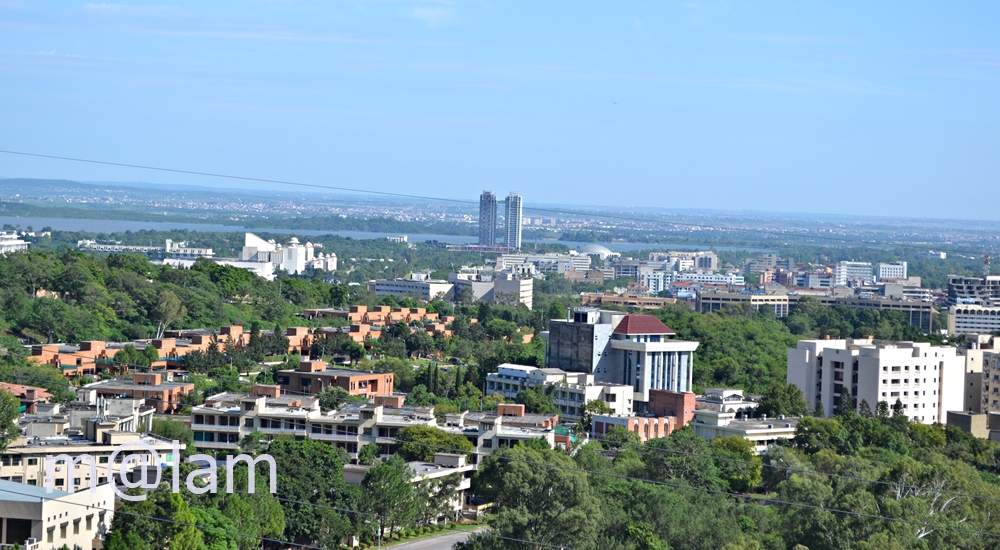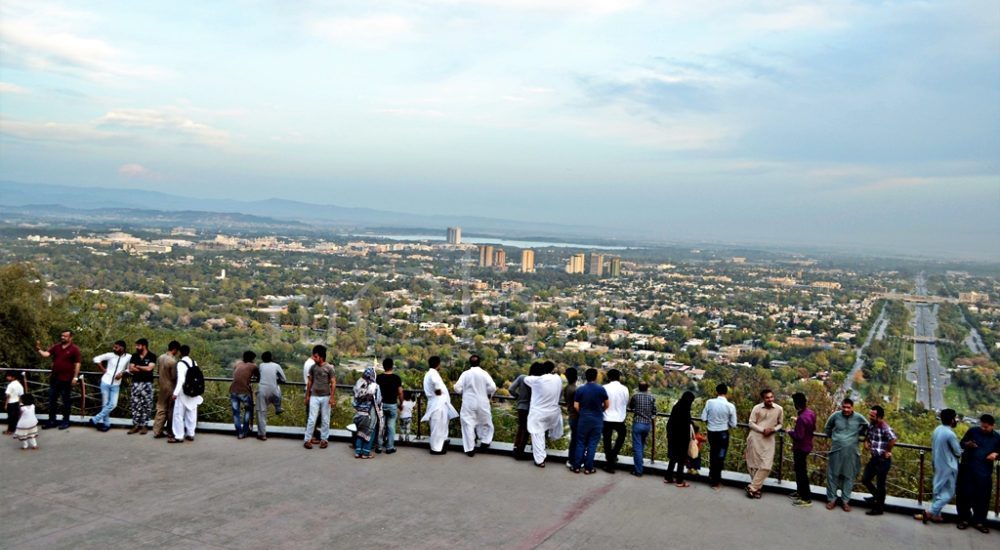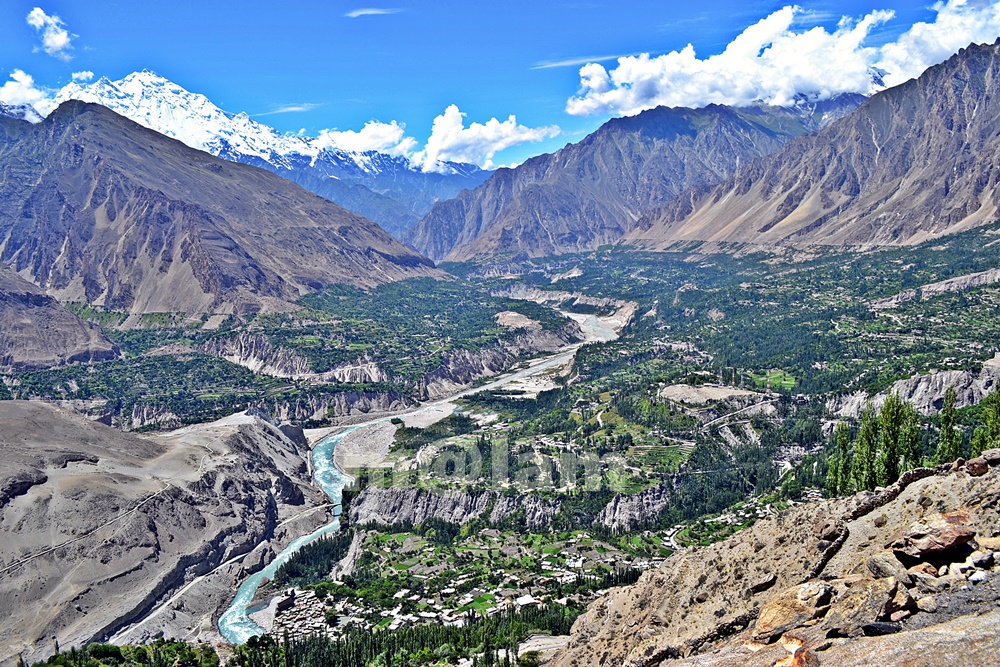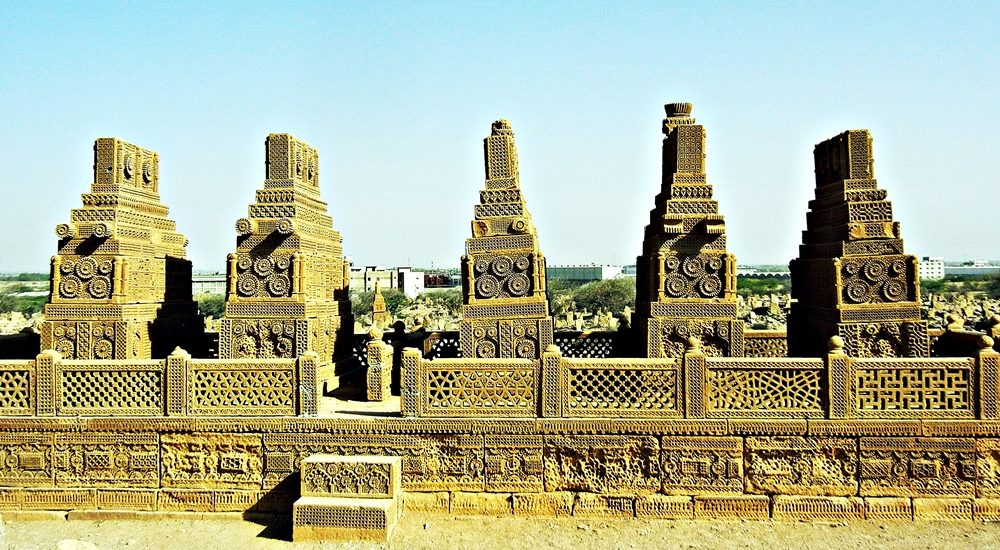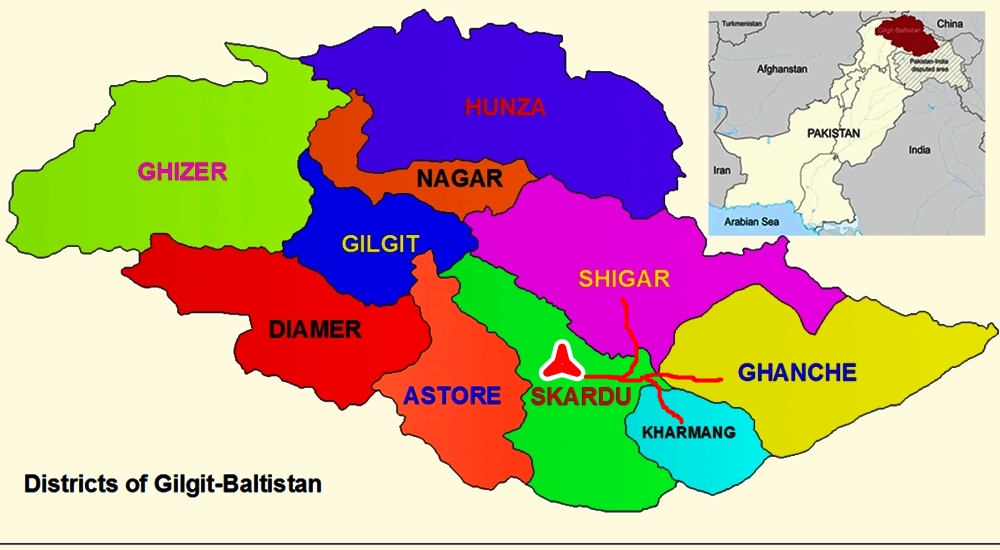Must-See Islamabad Tourist Attractions

Islamabad’s Tourist Attractions include major tourist spots found within the territory of the capital city. Surrounded by the lush greenery of the Margalla Hills, an extension of the majestic Himalayan Mountain ranges; Islamabad offers a scenic backdrop that changes with the seasons, showcasing a spectrum of natural colors.
Islamabad, the capital city of Pakistan, stands out among global capitals for its unique proximity to nature. Few other capitals enjoy such a harmonious connection with the natural environment. Renowned for its breathtaking beauty, Islamabad also boasts a rich historical heritage dating back to the Stone Age. Evidence of ancient human settlements, including relics and human skulls found along the banks of the Soan River, attests to its long history.
Below are the details of Islamabad Tourist Attractions.
HISTORIC AND CULTURAL MONUMENTS
Shah Faisal Mosque

Named after King Faisal bin Abdul Aziz of Saudi Arabia, the Shah Faisal Mosque is the largest mosque in South Asia and 6th largest in the world, located in the foothills of Margalla Hills. It was completed in 1986 at a hefty cost of USD 120 million. Bearing a contemporary design, inspired by a desert Beduine tent-shaped structure with four 80m high minarets in corners, the mosque was designed by the Turkish Architect Vedat Delokay. The interior of the Faisal Mosque is simple and elegant, with white marble walls and floors, and large chandeliers hanging from the ceiling. The prayer hall is surrounded by arched colonnades and is free from any decorative distractions, allowing worshipers to focus on prayer and reflection. The mosque can accommodate over 100,000 worshipers at a time and is open to visitors of all faiths and is a symbol of the unity and diversity of Pakistan.
There is no entry fee as such but to deposit shoes it costs a minor fee.
Pakistan Monument

The Pakistan Monument is a popular tourist attraction and a symbol of national pride for Pakistanis. Constructed in 2004, the Pakistan National Monument in Islamabad is a heritage site and symbol of national progress built to commemorate the struggle for independence and the formation of Pakistan. The design of the Pakistan Monument is inspired by the Islamic architecture of the Mughal era. The four petals represent the four provinces (Balochistan, North West Frontier Province, Punjab, and Sindh), while the three sandwiched smaller petals represent the three territories (Gilgit-Baltistan, Azad Kashmir, and the Federal Capital Islamabad). The petals are made of granite and marble and are adorned with intricate Islamic calligraphy and patterns. The aerial views of petals represent a crescent and the central star together represents the Pakistan flag. It is illuminated at night and provides a stunning view of Islamabad and its surrounding areas.
Shah Allah Ditta Caves

Shah Allah Ditta Caves are situated to the west of Islamabad, about 15 km from Golra interchange, in a centuries-old village called Shah Allah Ditta (also known as Sadhu ka Bagh). The more than seven hundred-year-old village was named after a Mughal period Darvesh. The caves, however, are believed to have been a meditation spot for Buddhist monks in the 4th century BC. There are only two caves on both sides of the spring which contain traces of human existence from ancient times. Hindu families lived in Shah Allah Ditta before the partition and the caves were used for their daily worship. There is a pathway right next to the village that is said to have been used as a route from Kabul to the Taxila by Alexander the Great and Sher Shah Suri while Mughal rulers and emperors often passed through while traveling from Afghanistan to the Hindustan.
Saidpur Model Village
Saidpur, a 500-year-old village nestled in the Margalla hills’ foothills, boasts a rich historical legacy and draws numerous visitors. Named after Said Khan, son of Sultan Sarang, the Gakhar chief of the Pothohar region in Babur’s Mughal era, it serves as a captivating microcosm of diverse cultures coexisting harmoniously. Within its confines lie a Hindu temple, Sikh Gurdwara, and Sufi tomb, offering a unique tapestry of spiritual traditions. Originally converted into a Hindu place of worship by Mughal commander Raja Man Singh, the village has undergone restoration, transforming into a cultural hotspot and heritage site. Its terraced mud houses, showcasing traditional architecture, handicrafts, and local cuisine, provide insight into Pakistani rural life. Notable landmarks include the 16th-century Rama Mandir, dedicated to Lord Rama, and a 20th-century Gurdwara serving educational purposes. Additionally, a photo gallery depicts the village’s early lifestyle, predating Islamabad’s emergence as the capital.
PARKS IN ISLAMABAD
Rose & Jasmine Garden
The Rose and Jasmine Garden is a picturesque public garden managed by the Capital Development Authority. Situated within the recreational zone of Shakarparian Hills, it lies adjacent to the Islamabad sports complex and Aabpara market, along the Srinagar Highway. Covering an area of 20,360 square meters, the garden boasts a diverse collection of nearly 250 varieties of roses and a dozen types of jasmine. Visitors to the nearby Pakistan Monument and Shakarparian often include a stop at this enchanting garden in their itinerary. The garden offers key amenities such as a parking area, seating areas, a walking and cycling track, and a cafeteria (Dhaba) for the convenience of the public.
Japanese Childern Park

Japanese Park is a children’s playground situated at the base of Margalla Hills, adjacent to Margalla Road near the F6 sector, close to Islamabad Zoo. Spanning approximately 10 acres, this park is equipped with modern amenities and is a popular destination for children and families alike. Established on 30 December 1985, it stands as a unique gift from Japan to the children of Pakistan. The park features vibrant nurseries with colorful flowers and various play areas for children, including swings, climbing nets, jumping castles, trampolines, zip lines, bouncing cushions, and slides. It offers a plethora of entertaining activities for kids to enjoy. Cherry blossom trees adorn the park, lending it an authentic Japanese ambiance. Additionally, there is a small refreshment area within the park offering snacks and beverages for visitors’ convenience.
Japanese Children Park Timing: 08:00 am – 11:00 pm
Entry Ticket: Rs. 30 per person (infants free)
Fatima Jinnah (F-9) Park

Fatima Jinnah Park, also known as Capital Park or F-9 Park, spans the entire F-9 sector of Islamabad, serving as a vast public recreational area. Named in honor of Fatima Jinnah, the revered sister of Pakistan’s founder, Quaid-e-Azam Muhammad Ali Jinnah, this park ranks among the largest family parks in Southeast Asia. Encompassing 750 acres, it features four main gates providing access from all directions. Designed by Michael Japero and inaugurated in 1992, the park’s master plan was initially prepared by the Japan International Cooperation Agency, with a revision conducted in 2005 by Pakistani architect Nayyer Ali Dada. While some sections of Fatima Jinnah Park consist of constructed areas bustling with activity, other expanses remain largely untouched by human presence. These open spaces are popular for recreational strolls and outdoor sports, occasionally doubling as venues for driving lessons.
Lake View Park

Lake View Park in Islamabad is a breathtaking modern recreational space crafted to accommodate a wide range of leisure pursuits. Positioned against the backdrop of Rawal Lake and the encompassing town, the park boasts a scenic location. Visitors can partake in numerous amenities such as a bird sanctuary, tranquil sitting pagodas, outdoor cooking zones, dining options, scenic walking paths, jogging tracks, opportunities for boating and sailing, live musical entertainment, vibrant flower gardens, shaded parking areas, and restroom facilities. Additionally, the Ibex Club offers attractions like rock climbing and a motorsports ranch facility, enhancing the park’s appeal.
RECREATIONAL SITES IN ISLAMABAD
The Margalla Hills National Park is the offshoot of the Himalayas located to the north of Islamabad. The Park is made up of Margalla Hills, Shakarparian, and Rawal Lake. The park covers approximately 17,386 hectares (67.13 sq mi) and was established in 1980. Margalla National Park is rich in biodiversity, especially flora and fauna including 600 plant species, 250 bird varieties, 38 mammals, and 13 species of reptiles. Pir Sohawa and Daman-e-Koh are two major viewpoints visited by local and international tourists frequently.
Pir Sohawa (site demolished in 2024)

Located at an elevation of 3600 feet above sea level, Pir Sohawa atop the Margalla Hills stands as the highest viewpoint in Islamabad. Offering breathtaking vistas, this viewpoint features modern restaurants along with ample parking and security facilities. Pir Sohawa is easily accessible by car, with a journey time of approximately 30 minutes from Islamabad Zoo. Alternatively, adventurous hikers can reach Pir Sohawa by foot via Trail 3 from F-6/3 in approximately 2-3 hours or along Trail 5 from G-5 in around 3-4 hours, enjoying the scenic beauty of the Margalla Hills along the way.
Daman e Koh
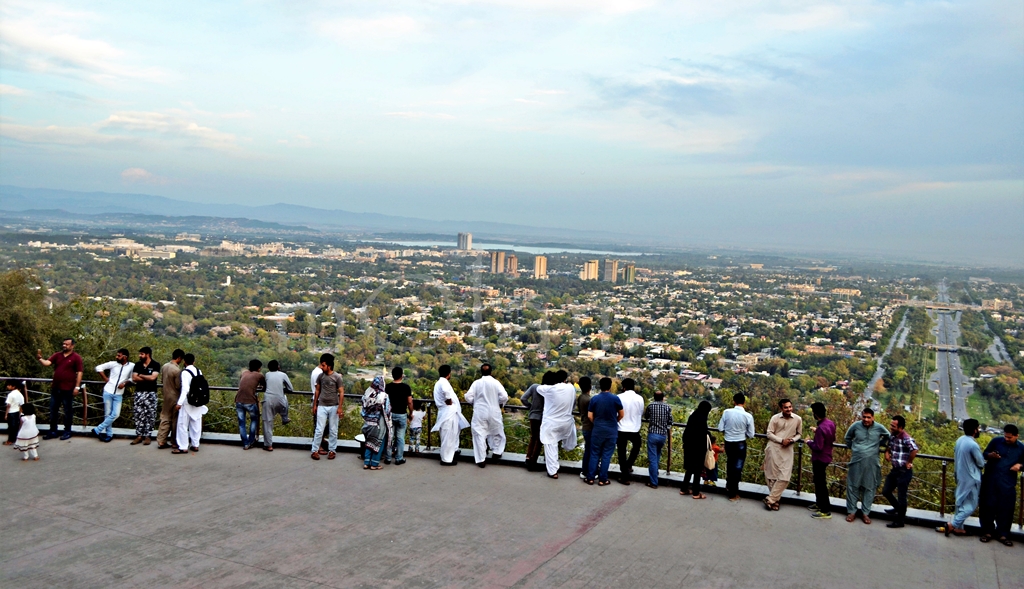
Daman-e-Koh, nestled in the heart of the Margalla Hills above the E-6 sector, offers panoramic views of the capital city. Situated at an elevation of 2400 meters above sea level, it’s merely a 5 km drive from Islamabad Zoo. This popular tourist destination attracts a large number of visitors daily, especially during the summer months. For those seeking a more adventurous approach, Daman-e-Koh can also be reached on foot from the zoo via Trail 2 in just 40 minutes, allowing hikers to immerse themselves in the natural beauty of the Margalla Hills along the way.
Rawal Lake

The Rawal Lake, also known as Rawal Dam, is an artificial reservoir located in Islamabad, serving as a vital water source for the twin cities. Constructed in 1962, it draws water from the Korang River and various small streams originating from the Margalla Hills, covering an area of 8.8 square kilometers. Surrounding the lake, the area has been beautified with flowering trees, gardens, picnic spots, and tranquil pathways. Visitors often engage in recreational activities such as picnicking, fishing, and boating, taking advantage of the terraced garden and the scenic views offered from the highest point. Private clubs organize activities like boating, sailing, water skating, and diving, further enhancing the recreational opportunities available at Rawal Lake.
Shakar Parian Hills
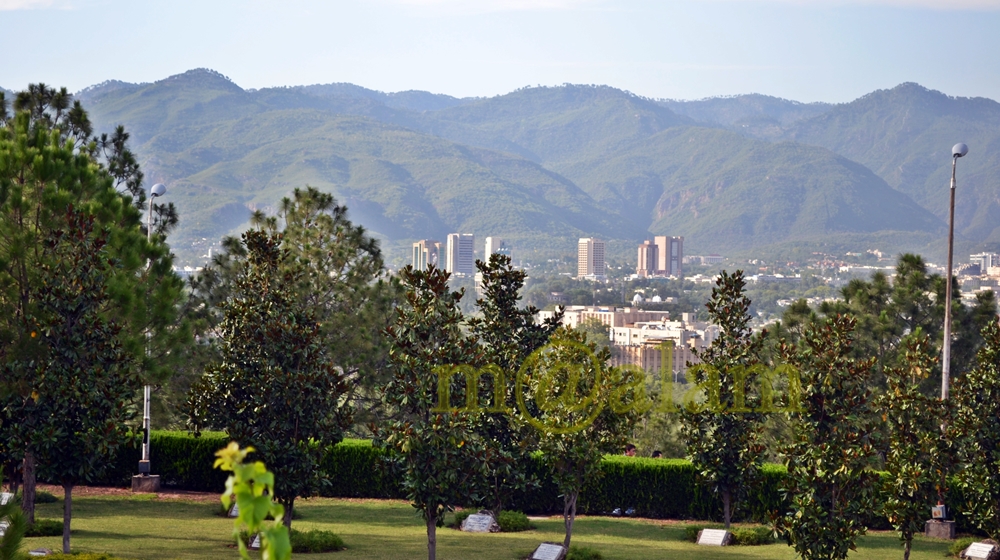
Shakarparian, situated near Zero Point in Islamabad at an altitude of 2000 feet, is a popular tourist destination frequented by visitors. Offering a picturesque view of Islamabad, it serves as a charming hill station. Additionally, Shakarparian is home to the iconic Pakistan Monument and the nearby wax museum. Before partition, this area was settled by leaders of the old Ghakhar tribe. Historically, Shakarparian was a place of relaxation, deriving its name from the combination of two Potohari words: “Shakar” meaning sweet, and “Parian” meaning hilltop or resting place.
Islamabad Zoo (currently under renovation)

Covering an expansive 82 acres, Islamabad Zoo is a beloved family destination, housing over 300 animals, including a diverse array of 200 bird species. Situated at the base of the Daman-e-Koh viewpoint, the zoo enjoys convenient accessibility from all sectors of Islamabad and Rawalpindi. Drawing a large number of local citizens and foreign visitors daily, the zoo offers an enjoyable experience for all ages.
MUSEUMS IN ISLAMABAD
Lok Virsa Museum
Situated in the premises of the Shakarparian Hills in Islamabad, the Lok Virsa Museum, also known as the National Institute of Folk & Traditional Heritage or the Heritage Museum, holds the distinction of being Pakistan’s inaugural state museum dedicated to ethnology. It serves as a comprehensive repository of the history and enduring traditions of the Pakistani people, spanning both mainstream and remote regions of the nation. Encompassing approximately 60,000 square feet, this cultural center stands as a testament to Pakistan’s rich heritage, housing a diverse array of historical artifacts and artistic expressions including sculptures, paintings, ceramics, musical instruments, jewelry, and textiles. With its meticulously curated exhibits showcasing the cultural mosaic of Pakistan and providing insights into the historical evolution of the region, as well as its interactions with neighboring Central Asian nations, the museum offers visitors an immersive journey that typically requires 2-3 hours to fully appreciate.
Visit Hours
Open: Tuesday to Sunday (10 am to 6 pm with break time from 1 pm to 2 pm)
Closed: Every Monday
Address: Garden Avenue, Shakarparian, P.O. Box 1184, Islamabad, Pakistan
Tel: +92-51-9249209 +92-51-9249203,
Email: info@lokvirsa.org.pk
Entry Fee:
Local Adults: Rs.50
Students: Rs. 20
Foreigners: Rs. 800
Children: Free for children below 7 years of age
Wheelchair: Available
Islamabad Museum
The Islamabad Museum, housed on the ground level of the Sir Syed Memorial building along Ataturk Avenue, features two extensive murals in its main entrance hall. One mural depicts the nation’s history from 1857 to the inception of Pakistan in 1947, while the opposite side showcases framed images of significant monuments, including archaeological and heritage sites. With a meticulously organized display, the museum offers comprehensive information on artifacts spanning the various civilizations that have thrived in the region since ancient times. Its collection includes fossils, stone tools, relics from the 7th-century Mehergarh, items from the Indus Valley Civilization, Gandhara art and architecture, coins and seals from diverse periods, ceramics, paintings from the Islamic era, as well as edicts and manuscripts documenting Muslim rule in the subcontinent.
Visit Hours:
Open: 09:30 am to 04:30 pm (Thursday to Tuesday)
Closed: Every gazette holiday by the Government of Pakistan
Address: 19 Ataturk Ave, G-5/1 G-5, Islamabad, Islamabad, Pakistan.
Tel: +92 51 9221325
Entry Fee: Nil
Wheel Chair: Not available
Pakistan Railways Heritage Museum
The Pakistan Railways Heritage Museum, also known as Golra Sharif Railway Museum, was created in 2003 by accumulating the railway scrape from the stations & garages all over the country. The museum has two separate halls containing relics and memorabilia reflecting the history of the railway over more than 150 years. These relics include communication tools, mechanical models, signaling systems, original furniture, surgical tools from Railway hospitals, and the evolution of operational protocols preserved in a chronological display besides showcasing the social impact as well as the anthropological implications of the railways on human geography. The big yard has cranes, saloons, locomotive trolleys, coaches, and narrow gauge tracks assembled impressively. Special displays include a German postal car, the steam and electric locomotives, a saloon car used by Lord Mountbatten – the last Indian viceroy, and the special 1888 saloon car belonging to the Maharaja of Jodhpur.
Visit Hours:
Open: 09:00 am to 04:00 pm (all week)
Address: Golra Sharif Railway Station (Can be approached from E/11 and G/13, Islamabad)
Entry fee: Rs. 400 for foreigners
Wheel Chair: Not available
Pakistan Monument Wax Museum

The Pakistan Monument Museum on the premises of Pakistan Monument in Shakar Parian Hills Islamabad is a very unique museum featuring the depiction of the history of the subcontinent in wax form. The museum preserves the memory of diverse past and decisive happenings on this landscape making today’s Pakistan. All the movements have been displayed in chronological order on its two floors. The lower section displays the ancient civilizations, the arrival of Islam, the war of independence, rare manuscripts and books in the library, and relics of Iqbal and Muhammad Ali Jinnah the creator of the country, and the entire pre-partition movements in the history of rich and distinct Pakistan. The upper floor has all the key information and a pictorial display of post-partition developments in the country that includes sports, culture, education and research, military, geography, agriculture, industry, and politics.
Recommended duration: 1-2 hours
Entry Fee and Visit Hours:
Local Adults: Rs. 150
Students: Rs. 80
Foreigners: Rs. 1500
SAARC/ECO delegates: Rs. 1000
Free for children under 7 years of age
Open: Tuesday – Sunday (10:00 am – 06:00 pm)
Closed: Every Monday
Wheel Chair: Not available
Pakistan Museum of Natural History
Established in 1976, the Pakistan Museum of Natural History (PMNH) is located near the Lok Virsa Museum in Islamabad. Its several galleries showcase the biodiversity of Pakistan including flora, fauna, and geological heritage besides showcasing minerals, rocks, fossils, and meteorites. The collection has been categorized into three distinct divisions – Botanical Sciences, Earth Sciences, and Zoological Sciences – which describe the collection, preservation, and display of Pakistan’s natural heritage while the Public Services category is responsible for mass education and popularization of the natural history through various displays and exhibits. The key attraction of the PMNH is its dinosaur gallery, which showcases the fossils of various dinosaur species found in Pakistan, and the botanical garden and a live animal display featuring several species of birds, mammals, and reptiles. The PMNH also carries out research in the field of natural history and offers valuable educational programs and resources for visitors, students, and researchers.
Visit Hours:
Open: 09:00 am to 08:00 pm
Closed: Monday
Address: Shakarparian National Park, Garden Ave, Islamabad.
Tel: +92-51-9249239
Entry fee: Rs. 20 for adults, Rs. 10 for students
Foreigners:
Wheel Chair:
National Insect Museum (NIM)
Established in 2005 within the premises of the Pakistan Agriculture Research Council in Chuck Shehzad, Islamabad, the National Insect Museum (NIM) serves as a repository for the country’s insect heritage. With over 150,000 species of insects meticulously preserved and categorized according to different orders, the museum provides a valuable reference collection. Scientists and staff are actively engaged in nationwide surveys to document and analyze insect fauna across various agroecologies. The objectives of NIM include conducting research on insect biodiversity and biosystematics, maintaining and updating insect collections as national reference museums, monitoring the impact of climate change through indicator species, developing and sharing knowledge databases using Information & Communication Technology (ICT), and undertaking molecular characterization of preserved insect specimens.
Visit Hours:
Open: 08:00 am to 04:00 pm (Monday to Friday)
Closed: Saturday & Sunday
Address: Pakistan Agriculture Research Council, Chuck Shehzad, Islamabad
Cell: +92-300-5233259 (Mr. Anjum Shehzad)
Entry Fee: N/A
Wheel Chair:
SHOPPING MALLS IN ISLAMABAD
Islamabad offers a variety of shopping malls, catering to diverse preferences and budgets. From upscale, air-conditioned malls showcasing international brands to open-air markets specializing in affordable and second-hand goods, the city boasts a wide range of shopping experiences.
Blue Area
The Blue Area, located along Khayaban-e-Quaid-e-Azam in Islamabad, Pakistan, serves as a bustling commercial and business corridor. Its name originates from the color blue, which was designated to this area in the city’s original urban design plan. The Blue Area is characterized by a cluster of tall skyscrapers, including prominent landmarks such as The Centaurus, The Stock Exchange Building, U Fone Tower, the Saudi-Pak Tower, the Green Trust Tower, the UBL Building, the OGDCL Building, the State Life Building, and the Shaheed-e-Millat Building. These towering structures contribute to the area’s significance as a major hub for business and commerce in Islamabad.
Centaurus Shopping Mall
The Centaurus Mall stands as a contemporary shopping complex distinguished by its striking architecture comprising three soaring towers. Offering a diverse array of high-end brands, dining establishments, and entertainment venues on its lower levels, the mall also features hotel accommodations on its mid-level floors and residential apartments on its upper floors. A dedicated ground-level parking area caters to both in-house guests and residents. Renowned as one of the largest malls in Pakistan, The Centaurus Mall is a favored destination among both local residents and tourists.
Safa Gold Mall
Safa Gold Mall, located in Islamabad’s F-7 sector, is renowned as a premier shopping destination, hosting a vast array of leading fashion brands from around the globe. In addition to its extensive fashion offerings, the mall boasts a selection of top-notch culinary experiences, making it a sought-after destination for leisure and entertainment suitable for the entire family.
Aabpara Market
Aabpara Market, situated in the heart of Islamabad, is a well-frequented shopping hub conveniently accessible from all government offices. Boasting a lively atmosphere, Aabpara is celebrated for its diverse range of shops offering a plethora of goods and services at affordable prices. Visitors can explore an array of offerings, including clothing, footwear, electronics, accessories, fresh and frozen meat, toys, banking and postage services, and delectable street food options.
F-10 Markaz
F-10 Markaz serves as a prominent commercial and business center nestled in the F-10 sector of Islamabad. Positioned adjacent to F-9 Park and other bustling commercial areas like G-9, F-8, and the Blue Area, F-10 Markaz is revered for its diverse range of shops, restaurants, cafes, and banks. Renowned as a favored destination for shopping, dining, and entertainment, the sector offers convenience and accessibility from various sectors across Islamabad.
G-9 Markaz
G-9 Markaz stands as a renowned shopping destination in Islamabad, situated within the G-9 sector. This bustling market serves as a hub for shopping, dining, entertainment, and office spaces. Offering a wide array of products at affordable prices, ranging from clothing and footwear to electronics and household items, the market caters to diverse consumer needs. Conveniently accessible from both Islamabad and Rawalpindi, G-9 Markaz is a favored destination for residents and visitors alike.
Sunday Market (Itwar Bazar)
Itwar Bazaar, situated in Islamabad’s H9 sector, is an expansive open-air market that operates three days a week – every Tuesday, Friday, and Sunday. Renowned as the largest market in Islamabad in terms of both area and variety, Itwar Bazaar offers a diverse range of products at reasonable prices. Visitors can explore an array of items including vegetables, fruits, new and used footwear, kitchen accessories, toys, garments, electronics, antiques, spices, and grains. The Sunday Market is easily accessible by Metro and attracts people from all walks of life, making it a bustling hub of activity and commerce.
Peshawar Mor
Located at the convergence of two significant highways, the Grand Trunk Road (commonly known as the GT Road) and the Islamabad Expressway, Peshawar Mor holds a pivotal position in the bustling capital city of Pakistan, Islamabad. Beyond its transportation and commercial significance, Peshawar Mor is celebrated for its lively street food culture, notably featuring Shinwari, Dunba Karahi, and BBQ specialties. The area is dotted with numerous food vendors and small eateries, offering a diverse array of both local delicacies and international cuisines to satisfy every palate.
HIKING TRAILS IN ISLAMABAD

The Margalla Hills, an extension of the Himalayan mountain range, boast fertile soil and lush greenery, adorned with dense forests comprising diverse flora and fauna. Efforts by the forestry department of Pakistan and local authorities aim to promote tourism in the area, with annual hiking excursions organized by private clubs and authorities to raise awareness about the significance of the Margalla Hills across all age groups. Accessible from both sides of Islamabad, the hills offer eight trails, each designated with a number, such as Trails #1 through #6, along with the Saidpur Trail and the Bari Imam Trail. These trails vary in distance and provide safe opportunities for hiking, overnight camping, and exploration of the natural beauty of the region.
Trail 1:
This trail leads to the upper terminal of the Pir Sohawa road in approximately two hours. Continuing along the trail for an additional twenty minutes will bring you to Monal Restaurant.
Trail 2:
Starting from Islamabad Zoo, it’s about an hour’s walk to reach Daman-e-Koh. From there, it’s possible to continue further upward to the cactus ridge.
Trail 3:
This is the most renowned trail, beginning from Margalla Road in F-7. The path, uphill from the outset, can be somewhat taxing for some. It continues to ascend towards the summit and ends near the renowned restaurants at Pir Sohawa. The hike typically takes around two hours. Along the way, there are several resting stops offering breathtaking views of the city, along with refreshing cool breezes.
Trail 4:
This trail connects Trail 3 and Trail 5, allowing hikers to traverse in either direction— from Trail 3 to Trail 5, or vice versa.
Trail 5:
This easily accessible trail starts from Margalla Road in sector F-5 and runs nearly parallel to Trail 3. Trail 5 extends to the summit of Pir Sohawa Road. Hikers have the option to switch to Trail 3 either midway via Trail 4 or at the top by walking an additional distance of 1.5 kilometers along the ridge of the Margalla Hills. The estimated time to complete the trail varies between 3 to 5 hours, depending on one’s pace.
Trail 6:
This is another popular trail that begins from the rear of the Faisal Mosque in Sector E7. Trail 6 traverses through a valley along a clearly marked path, leading to the upper terminal of the Pir Sohawa road. The trail also features a designated track for mountain bikes and a bird-watching point.
Saidpur trail:
This trail leads to Monal Restaurant, winding through the village alongside the spring. However, the Saidpur trail is primarily utilized by local residents and sees relatively little use by outsiders.
Bari Imam Trail:
The Bari Imam Cave Trail is a 4.6-mile (11,000-step) route situated near the Federal Capital Territory, Pakistan. This trail involves an elevation gain of approximately 1056.2 feet and is classified as difficult in terms of difficulty level.
Top Hotels in Islamabad
- Islamabad Serena Hotel
- Islamabad Marriott Hotel
- Best Western Hotel
- Ramada Hotel
- Roomy Signature Hotel Islamabad
- Islamabad Hotel
- Margalla Hotel
- Legend Hotel
- Crown Plaza
- Regalia Hotel
- Envoy Continental Hotel Islamabad
- Tabaq (De Papae) Hotel
- Viridi Hotel
Famous Restaurants in Islamabad
- The Monal Restaurant
- Des Pardes
- Tai Pan (Islamabad Marriott)
- Rakaposhi (Isalambad Serena)
- Kabul Restaurant
- Kim Mun Chinese Restaurant
- Yum Chinese & Thai Restaurant
- Wang Fu
- Xinhua Capital Restaurant
- Haleem Ghar
- Tandoori Restaurant
Educational Institutions
- Allama Iqbal Open University(AIOU)
- Quaid-e-Azam University(QAU)
- International Islamic University(IIU)
- National University of Science and Technology(NUST)
- COMSATS Institute of IT
- National University of Modern Languages(NUML)



